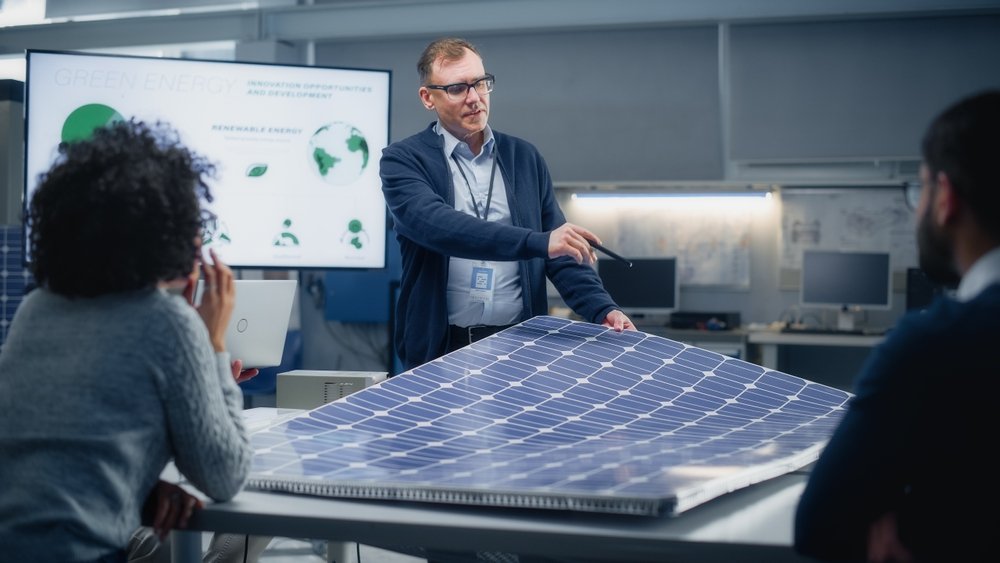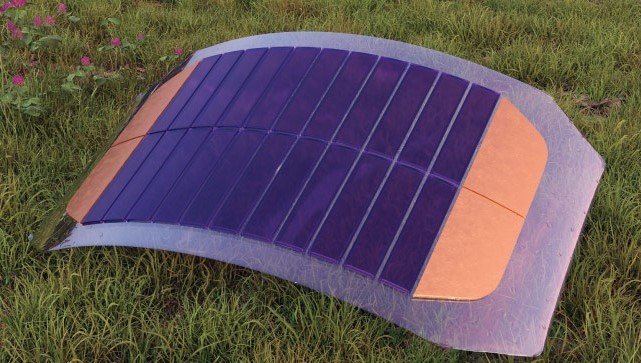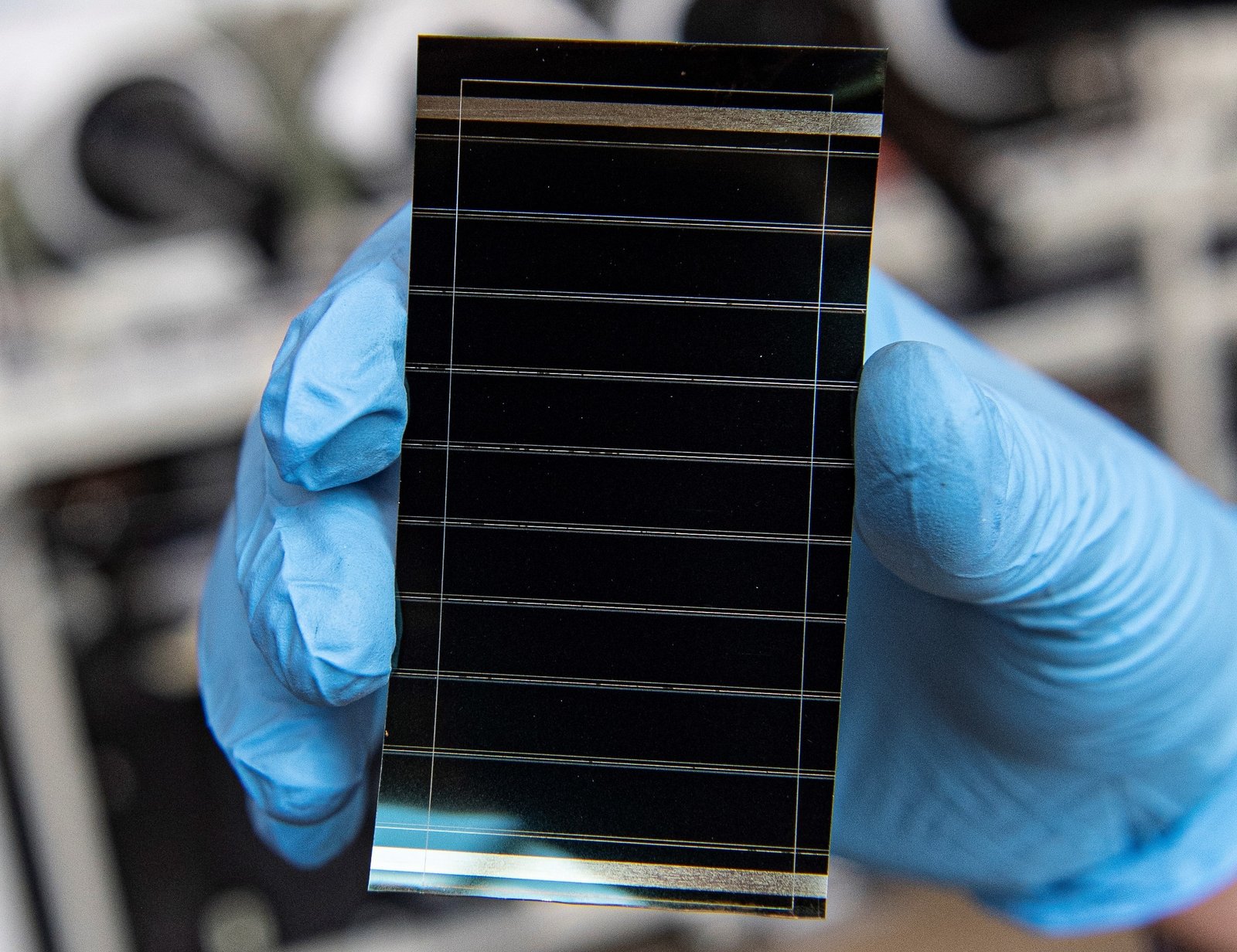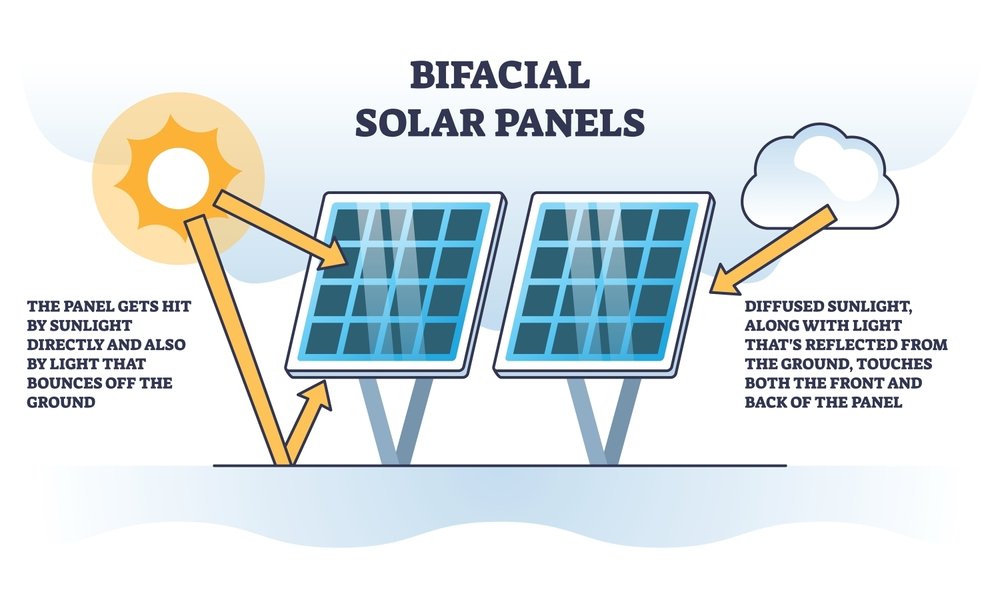The future of solar energy looks exceptionally promising as advancements in technology and increased global adoption continue to drive down costs and improve efficiency. Innovations such as high-efficiency photovoltaic cells, solar storage solutions, and smart grid integration are making solar power more accessible and reliable than ever before. Governments and businesses worldwide are investing heavily in solar infrastructure to meet renewable energy targets and reduce carbon footprints. As solar energy becomes more cost-effective and scalable, it is set to be very important in the global transition to sustainable energy, offering a cleaner and more reliable energy for everyone.
Solar energy is the radiant energy emitted by the sun, which can be harnessed to generate electricity using PV panels. It is one of the fastest-growing popular renewable energy sources in the United States with a significant jump in electricity generation from 0.9% in 2015 to 3.4% in 2022, with the utility-scale projects contributing 110.1 gigawatts (GW ) installed capacity of photovoltaic technology and ranks second position globally behind China.
The declining cost of solar panels in the past decade has made it an affordable option for homes and businesses. Additionally, the latest technological advancements in the solar energy industry strive to improve efficiency and environmental benefits to reduce greenhouse gases and enhance its popularity among US citizens.

The U.S. Department of Energy predicted that the electricity supply will increase from the present rate of 3% to 40% by 2035 and 45% by 2050. Also, 95% of the decarbonization can be achieved in 2035 without increasing the electricity price for users.
There are possibilities that in the upcoming decades, the solar panels cost will decrease with the increase in efficiency, with the rise of Building-Integrated Photovoltaics (BIPV) and solar-powered vehicles. Also, the government is trying to implement effective ways to manage solar waste. Similarly, the future of the solar industry is in great progress by having higher chances to create more job opportunities with the development of organic and Perovskite solar cells which consist of materials like Bifacial Solar Panels, Solar Trackers, and Solar Windows.
Before knowing the future of solar energy, you should also know what solar energy is, its origin, types, and all other important things.
What Are The Latest Technological Advancements in the Solar Energy Industry?
The solar energy industry continues to progress with these latest technological developments:
1. Development of Solar Cell Materials:
Perovskite solar cells offer higher efficiency, and the development has progressed by using materials for lower manufacturing costs than standard silicon cells.
Tandem solar cells are a combination of multiple layers of different materials that absorb a broader range of sunlight to increase efficiency beyond the silicon cells.
Organic Photovoltaics (OPVs) are made from carbon-based materials that are lightweight, flexible, and printed on various surfaces.
However, Researchers are planning for the ongoing development of these above cells for better stability and lifespan.
2. Bifacial Solar Panels:
The sunlight is captured from both sides of the Bifacial solar panels with the conventional PV cells at the front and the reflective layer at the back. Compared to standard panels, the electricity generation can be increased by 10 to 30% with the improved cell designs.
3. Solar Trackers:
The solar panels can be adjusted automatically with the advanced control algorithms and sensor technologies of the solar tracker system which ensures the panels get maximum exposure to sunlight to boost energy production up to 40%.
4. Solar Windows:
Sunlight can be converted into electricity by using transparent panels integrated with solar technology into windows. Without requiring any significant roof space, the latest innovations focus on improving the transparency, efficiency, and durability of solar window materials.
Development of Solar Cell Materials
Despite the significant progress in solar cell technology, there is a strong need to advance the efficiency, cost-effectiveness, durability, and scalability of solar energy technologies. Currently, both Organic and Perovskite Solar Cells are developed to satisfy the lower production costs and better environmental sustainability.
Organic Solar Cells

Typically, Organic solar cells use carbon-based materials composed of organic semiconductors to generate electricity using the sun’s radiation. Unlike the traditional crystalline solar cells made of silicon, they have lower efficiencies around 18%. The main difference between organic and PV cells is the semiconducting layer. In other words, organic photovoltaics (OPV) are dissolved in ink and printed on thin plastics to incorporate them in various places compared to crystalline photovoltaics (CPV).
The main advantages of these organic cells are:
- Lightweight and flexible to integrate on diverse surfaces
- Lower manufacturing costs
- Easily Tunable to enhance the overall efficiency of solar cells.
- Environmentally sustainable and the best alternative to conventional solar cells.
- Few greenhouse gases are emitted compared to the silicon PV cells.
On the other side, there are a few disadvantages of these types of solar cells:
- Lower conversion efficiencies in contrast to silicon cells.
- Shorter lifespan due to the degradation caused by other factors like heat, humidity, and UV radiation.
- Optimal performance complexity can increase manufacturing costs.
- Few organic cells might release toxic substances, which can have a severe impact on the environment during production and disposal.
Perovskite Solar Cells

A Photovoltaic device known as the perovskite solar cell uses light-absorbing perovskite material to convert sunlight into electricity.
Compared to silicon cells, the efficiency exceeds the theoretical limit of 25%, by generating more electricity with the same amount of sunlight and opening opportunities for various uses such as solar-integrated windows, building-integrated photovoltaics, and solar clothing.
BENEFITS:
- Better light absorption capacity across all visible wavelengths.
- Higher flexibility and light weight allow easier fabrication of delicate substances.
- Easily tunable to use in regions where silicon photovoltaic systems are inaccessible.
- Low-cost manufacturing helps Perovskite materials to be processed using low-temperature and solution-based methods
- Higher efficiency promises commercial deployment in regions with higher energy requirements.
DRAWBACK AND CHALLENGES:
- Vulnerability to moisture, oxygen, heat and light, UV rays, and other environmental factors affecting the stability.
- Contains rare or toxic elements, like lead, that raise concerns about long-term resource availability.
- Environmental impact during manufacturing or recycling.
- Less optimized interfaces between the perovskite absorber and charge transport layers lead to huge losses, less energy extraction, and operational instability.
Bifacial Solar Panels

These solar panels allow sunlight to penetrate and reach the cells from both directions through the transparent back sheet or glass on the rear side. A part of the sun’s radiation is absorbed and converted into electricity, whereas the remaining light after reflection gets absorbed onto the rear surface to generate additional electricity. The conductive material on the rear side collects electricity generated from the back surface.
In contrast to the typical solar panels that capture heat only from the front, bifacial panels can increase their efficiency and power output by generating electricity on both sides.
The Bifacial panels are highly versatile and can be used for residential, commercial, and utility-scale projects. They are specifically suitable for installations with reflective surfaces in places like white roofs, deserts, snowy landscapes, etc.
BENEFITS:
- Better performance in low light conditions by making it suitable for unstable weather patterns.
- Flexible designs allow various installation configurations like ground and rooftop mounted and integration with the building systems.
- Compared to the monofacial panels in optimal conditions, bifacial can generate 10-30% additional electricity.
- Enhanced efficiency by utilizing the sun’s energy from both sides.
DRAWBACKS AND CHALLENGES:
- Bifacial panels have higher upfront costs than traditional panels due to advanced technologies and materials.
- Installation needs to be done carefully as the complicated design requires an accurate tilting angle and mounting height to maximize the performance.
- The rear side of solar panels can easily get exposed to dust, dirt, and debris, which can reduce the performance if it is not cleaned regularly.
Solar Trackers

The sensors and motors of solar trackers orient solar panels toward the sun to maximize exposure throughout the day and optimize energy production.
These mechanical devices use sensors to track the sun’s position, which helps in adjusting the tilt and orientation of solar panels in an accurate position. The Single-axis trackers rotate solar panels along one axis, usually from east to west, based on the sun’s horizontal moment. Conversely, the Dual-axis trackers rotate solar panels around two axes by adjusting accordingly to both the horizontal and vertical movement of the sun by maintaining the optimal alignment and maximizing the energy captured.
The Trackers are used in large-scale solar farms, reflective environments, and land-constrained areas.
BENEFITS:
- Energy gets boosted by up to 20 to 30% than the regular panels, depending on the tracking technology and location.
- Improved efficiency by adjusting the orientation of solar panels to face the sun.
- Denser placement of solar panels by maximizing land use with a smaller footprint per unit of energy generated.
DRAWBACKS AND CHALLENGES:
- Higher initial cost involving additional equipment and expensive installation.
- Less common for rooftop applications due to space and weight constraints.
- Requires experts to carefully plan the complex design and installations.
Solar Windows
A renewable energy source installed in the form of photovoltaic windows or transparent solar panels in commercial and residential buildings allows solar energy to enter through the space and trap the radiation to convert it into electricity.
It serves as a dual purpose of window and generating electricity. The Transparent solar cell technology absorbs sunlight and converts it into electricity by allowing the visible light to pass through during the radiation absorption process.
Solar windows are used in commercial and residential buildings integrated as windows, skylights, and curtain walls, by involving architects and designers to incorporate the renewable energy source into building designs.
BENEFITS:
- Cleaner electricity generation by reducing dependence on traditional grid power and lowering carbon emissions.
- Reduces artificial lightning by improving comfort and productivity.
- Optimized space for enhancing renewable energy sources to generate electricity.
- Improves architectural sustainability by integrating solar energy into building design.
DRAWBACKS AND CHALLENGES:
- Lower energy conversion efficiency than traditional solar panels because of the imbalance between transparency and efficiency.
- Higher cost than conventional windows due to special manufacturing processes and equipment involved.
- Limited market availability compared to regular building materials.
- Less durability and reliability due to the degradation of transparent solar cell materials after a certain time.
What Will the Solar Energy Industry Look Like in the Future?
The future of solar energy appears to be promising with several advancements to shape the industry in the upcoming decades by considering these factors:
- Decrease in the Cost of Solar Panels
- Increase in Solar Panel Efficiency
- Advancements in Solar Storage Technology
- Rise of Building-Integrated Photovoltaics (BIPV)
- Rise of Solar Powered Vehicles
- Effective Ways to Manage Solar Waste
- More Jobs in the Solar Industry
1. Decrease in the Cost of Solar Panels
Over the past few years, the cost of solar panels has decreased by making it easily accessible for all kinds of individuals. The average cost of a residential solar system in the US is approximately $2.77 per watt. Typically, for homes with 6kW solar panels, the estimated cost is $16,620-$22,800.
From 2010 to 2022, the cost of solar panels was reduced by up to 80% due to government incentives and an improvised manufacturing process.
Constant developments in technology, installation techniques, and increased competition can push down the cost of solar panels. According to the International Renewable Energy Agency (IRENA), a price reduction of 41-58% can be expected by 2030.
2. Increase in Solar Panel Efficiency
Solar panel efficiency is defined as the ability of a solar photovoltaic (PV) cell to convert sunlight into electricity by representing the increase or decrease in the ratio of electrical power output to the solar energy input.
Currently, the average efficiency of a commercial solar panel ranges between 15 to 22%. In the U.S., The improvement in efficiency rate tripled from 7% in 2000 to 21% in 2021.
According to the theoretical limit, the maximum efficiency that can be achieved for single-junction silicon solar cells is 29.43% approximately.
The National Renewable Energy Laboratory (NREL) predicts that the efficiency of solar panels made of silicon cells will upgrade to an efficiency of 47% by the end of 2030.
3. Advancements in Solar Storage Technology
Solar batteries are energy storage systems that store electricity for future use with the advancement in technology. The development of Solar storage battery technology originated from the source of lithium-ion batteries.
These batteries are durable and store energy for longer periods, making them ideal for use at night. The storage system can be easily integrated into the existing solar system, thereby providing a cost-effective solution for homeowners and businesses.
One of the new advancements in solar battery storage technology is the flow batteries that use a liquid electrolyte to store energy and make it much more efficient than traditional batteries.
Finally, advancements in battery technology can enhance the storage process in the future by focusing on improvements in energy density, life cycle, and cost-effectiveness that can enable the better integration of solar energy into the grid.
4. Rise of Building-Integrated Photovoltaics (BIPV)

Building-integrated photovoltaics (BIPV) is the integration of photovoltaic (PV) cells directly into the building materials and structures with the dual function of generating electricity and windows for ventilation.
The different types of BPIV systems include:
Solar Roofing resembles traditional roofing materials while incorporating PV cells to generate electricity. It includes materials like asphalt shingles, clay tiles, or slate.
Solar Facades, consist of panels integrated into the exterior walls of the building for superior efficiency. Passive shading provides architectural benefits by increasing access to direct sunlight.
Solar Skylights incorporate photovoltaic cells by allowing natural light to illuminate the interior spaces during the day while generating electricity. It offers interesting design features and economical PV use.
Solar windows generate energy through natural light, particularly in restricted roof space and it is often used in multi-story buildings.
BIPV Building elements like canopies, balconies, and railings are integrated with solar panels to produce electricity as well as provide shading for outdoor spaces.
BENEFITS:
- Easy integration with architectural designs to generate electricity without requiring any additional land space.
- Improved energy efficiency by contributing building thermal insulation, shading, and various daylight strategies.
- Generates clean electricity by reducing the dependence on fossil fuels.
- Reduces the visual impact of traditional solar panels.
DRAWBACKS AND CHALLENGES:
- Higher upfront costs than conventional building materials and solar panels.
- Less durability and reliability by being unable to withstand environmental factors such as wind, rain, snow, and temperature fluctuations.
- Lower efficiency compared to standalone panels due to several factors like shading and integration constraints.
5. Rise of Solar-Powered Vehicles
Solar-powered vehicles are electric vehicles (EVs) that utilize solar energy as an additional power source for propulsion.
BENEFITS:
- Zero emissions during operations reduce greenhouse gas and avoid air pollution.
- Sustainable and environmentally friendly energy source for vehicle propulsion, thereby reducing the reliance on fossil fuels.
- Lower operational costs by utilizing free solar energy for propulsion.
- Less noise and vibrations in the electric motors compared to the internal combustion engines.
DRAWBACKS AND CHALLENGES:
- Limited energy storage capacity
- Lower energy efficiency due to the limited surface area on the vehicles
- Highly dependent on weather conditions
- Expensive manufacturing process compared to electric vehicles.
The transportation sector has shifted its gears by introducing electric vehicles equipped with photovoltaic panels that are mounted on the vehicle’s surface that capture sunlight to generate electricity and charge the vehicle’s battery.
With various improvements in technology and EV adoption growth, the market for solar-powered vehicles is expected to rise tremendously in the upcoming decades as various companies like Sono Motors, Lightyear, Toyota, Hyundai, and several others are actively pursuing the advancements to overcome challenges.
{Video Credit- Seeker}
6. Effective Ways to Manage Solar Waste
Solar waste is the discarded components of solar photovoltaic (PV) systems such as solar panels, inverters, mounting structures, and other linked electronic components.
According to the survey conducted by the National Renewable Energy Laboratory (NREL), solar waste is expected to reach 8 million metric tons by 2030 and 78 million metric tons by 2050.
However, many companies like First Solar, SunPower, and REC Group are working on waste management and recycling programs by carefully planning the disposal methods in an environmentally responsible manner as well as reclaiming the valuable materials from solar panels.
Parallelly, managing solar waste and improving sustainability becomes important with the progressing innovations in technologies of solar panel recycling.
Governments in countries like the European Union (EU), India, and China have taken several initiatives to mitigate solar waste by mandating the collection and recycling of solar panels.
7. More Jobs in the Solar Industry
It is expected that solar energy will create various job opportunities in different sectors like manufacturing, installation, maintenance, and several others.
The solar industry employed approximately 3.8 million individuals in 2021. According to the prediction of IRENA, 30 million jobs will be provided in the solar energy industries by 2030, thereby becoming the world’s fastest-growing sector. Whereas, the SEIA estimates around 532,000 jobs in the US by 2030, representing a 103% increase in the solar industry employment rate from 2023.
{Video Credit- SciShow}
Conclusion
Overall, the future of solar energy looks positive and encouraging, with lots of possibilities and potential for a sustainable future.
The consistent advancements can result in favorable outlooks such as Cost Reduction, progress in technological innovations, public demand, and government incentives making it accessible to a wider population.
On the other side, certain challenges need to be addressed to overcome the barriers and ensure widespread adoption which includes grid integrations, effective energy storage, land use, environmental impact, Financial investment, Economic Growth, and sustainability.
Ray is an avid reader and writer with over 25 years of experience serving various domestic and multinational private and public energy companies in the USA.

